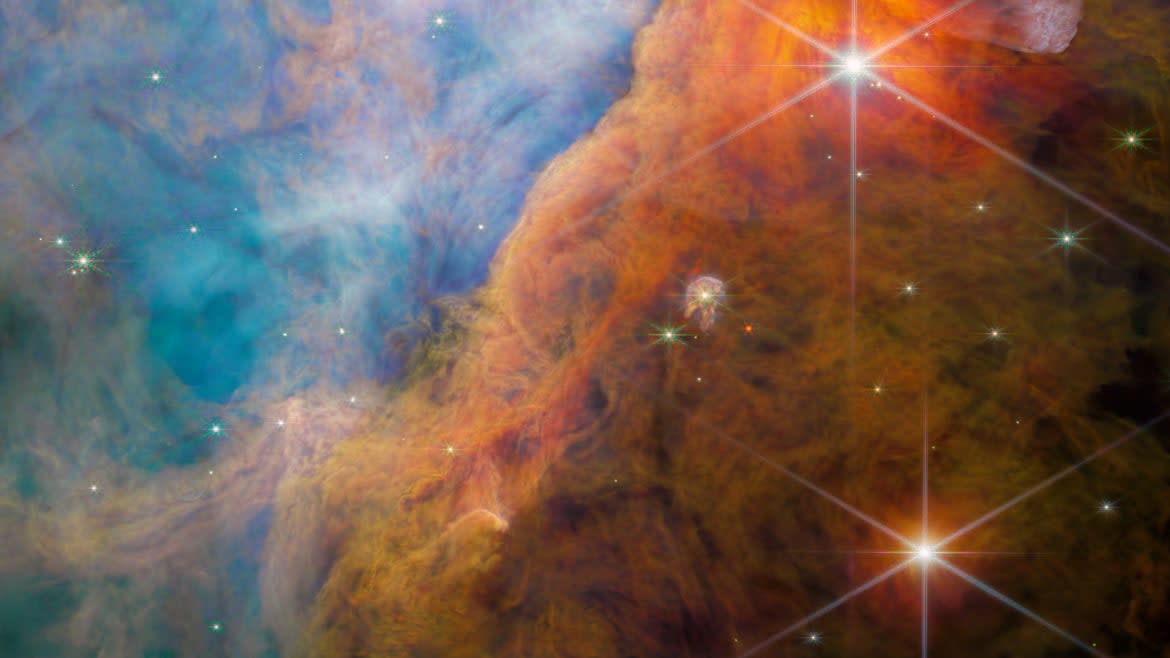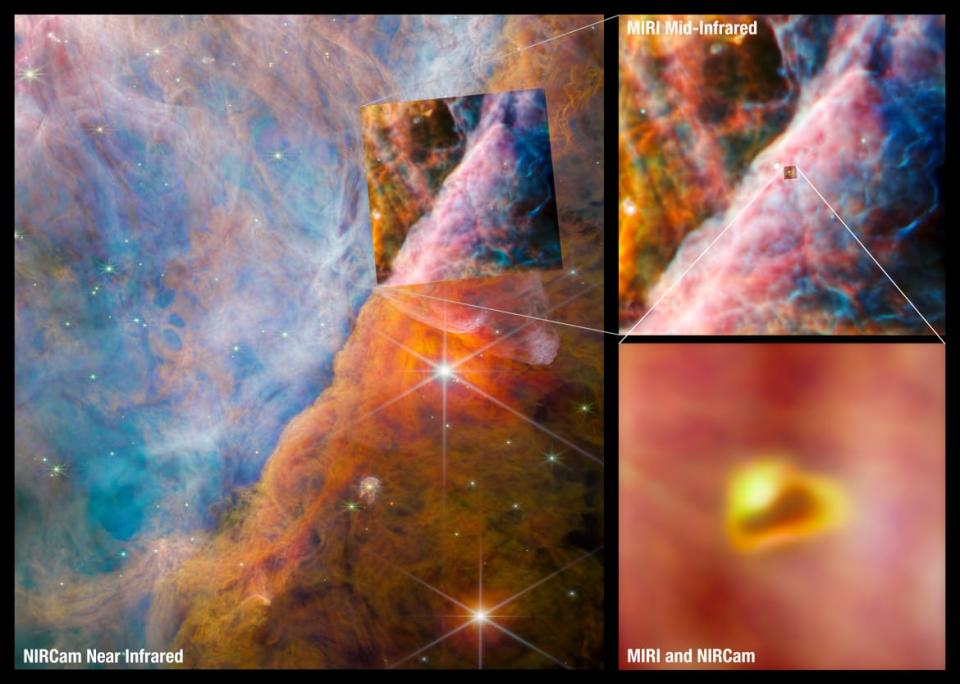NASA’s Webb Telescope Cracks a 40-Year-Old Space Mystery

For the past year, the James Webb Space Telescope has been steadily doling out jaw-dropping pictures of the cosmos—ranging from enormous galaxy clusters, chaotic nebulas, and a star shedding its layers before a supernova.
While the eye candy is great, it’s not the only thing that the JWST can do. In fact, the telescope is armed with a host of instruments to gather a treasure trove of scientific data about the universe around us.
“JWST was built to detect galaxies far far away, but it turns out it can also serve as a machine to discover new molecules in space,” Olivier Berné, an astrophysicist at Institut de Recherche en Astrophysique et Planétologie in France, told The Daily Beast. “This was not really anticipated and shows the incredible potential of this mission.”

JWST image of the Orion Nebula where the planetary disk containing CH3+ was spotted by astrophysicists.
Berné and his fellow researchers discovered one such molecule—called methyl cation (CH3+)—using data gathered by the JWST of a planet-forming disk in the Orion Nebula roughly 1,350 lightyears away. For more than 40 years, scientists have suspected that CH3+ existed in interstellar chemistry—but haven’t actually seen it until now. The team published a paper of their findings’ on Monday in the journal Nature.
Much of the excitement behind the discovery can be attributed to the fact that CH3+ is the cornerstone for building complexity in “the most simple elements formed in the Big Bang and in stars,” Berné explained. Without it, much of space likely wouldn’t have the complex molecules that it does have.
“CH3+ is the heart of much of interstellar chemistry,” Ilse Cleeves, an astrophysicist at the University of Virginia who wasn’t involved in the study, told The Daily Beast. “It's especially important for setting up the formation of organic molecules in space.”
NASA’s Webb Telescope Snaps Insane Photo of Dust Rings Around Nearby Star
However, Cleeves added that CH3+ is incredibly elusive because it is “formed and destroyed constantly.” That means that confirming its existence has been like hitting a moving target for astronomers for decades.
That’s why the study’s authors turned to the Orion Nebula. This region of space is extreme, chaotic, and swirling with planet-forming disks of dense hot gas. This environment allows the region to build up enough CH3+ for the Webb telescope to spot it from our galactic backyard.
The team plans to continue searching for methyl cation and the molecules it produces using radio telescopes. Berné added that the researchers are also interested in using the JWST further in order to study the molecule at a quantum level.
For now, the study is just further proof that the JWST is helping uncover some of the biggest mysteries about the cosmos—some that have stumped scientists for years. While dazzling space pictures are always welcomed, it’s the data and insights that are the real scientific game-changers.
“It confirms our understanding of the exotic chemistry in space is on the right track,” Cleeves said.
Get the Daily Beast's biggest scoops and scandals delivered right to your inbox. Sign up now.
Stay informed and gain unlimited access to the Daily Beast's unmatched reporting. Subscribe now.

